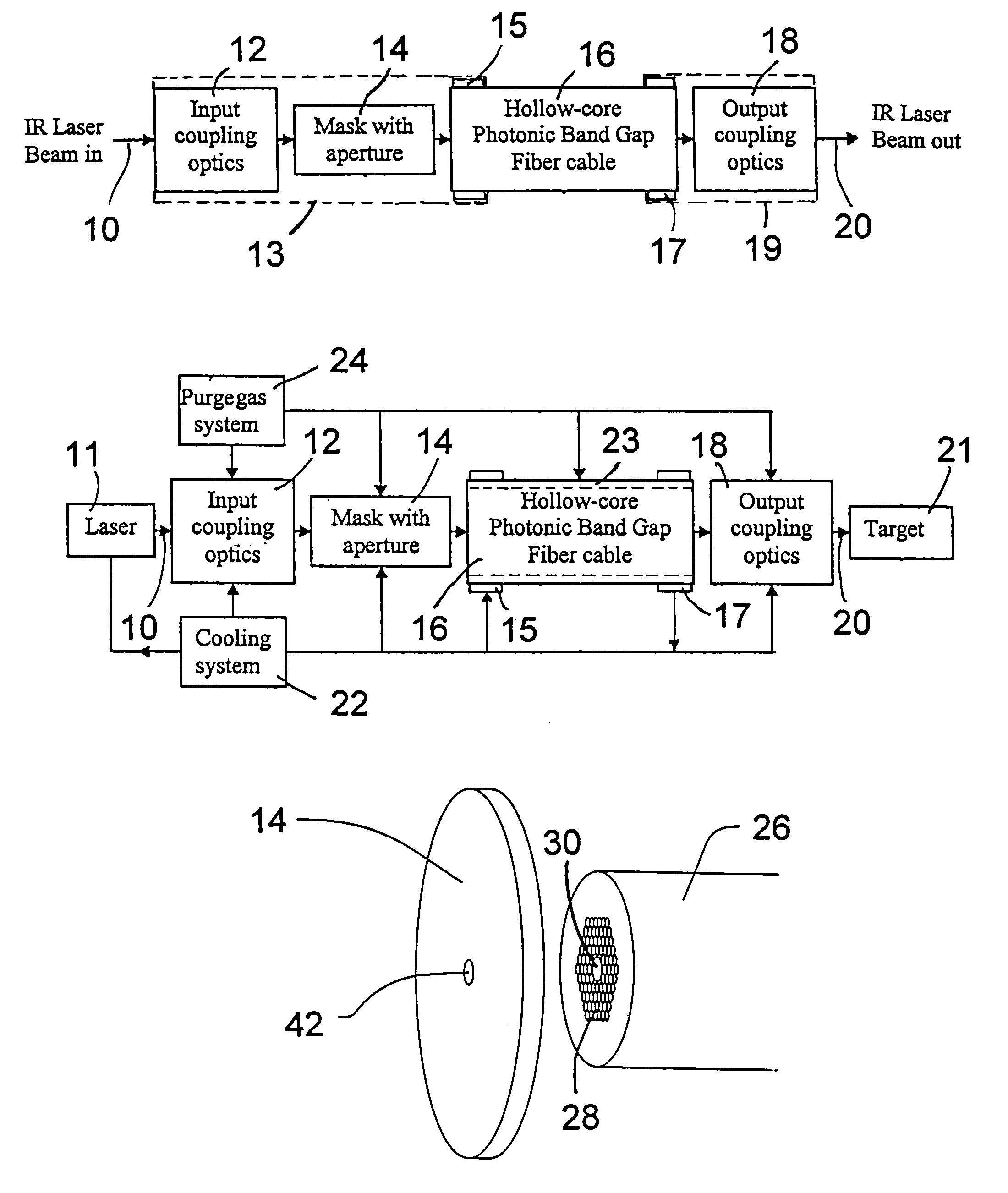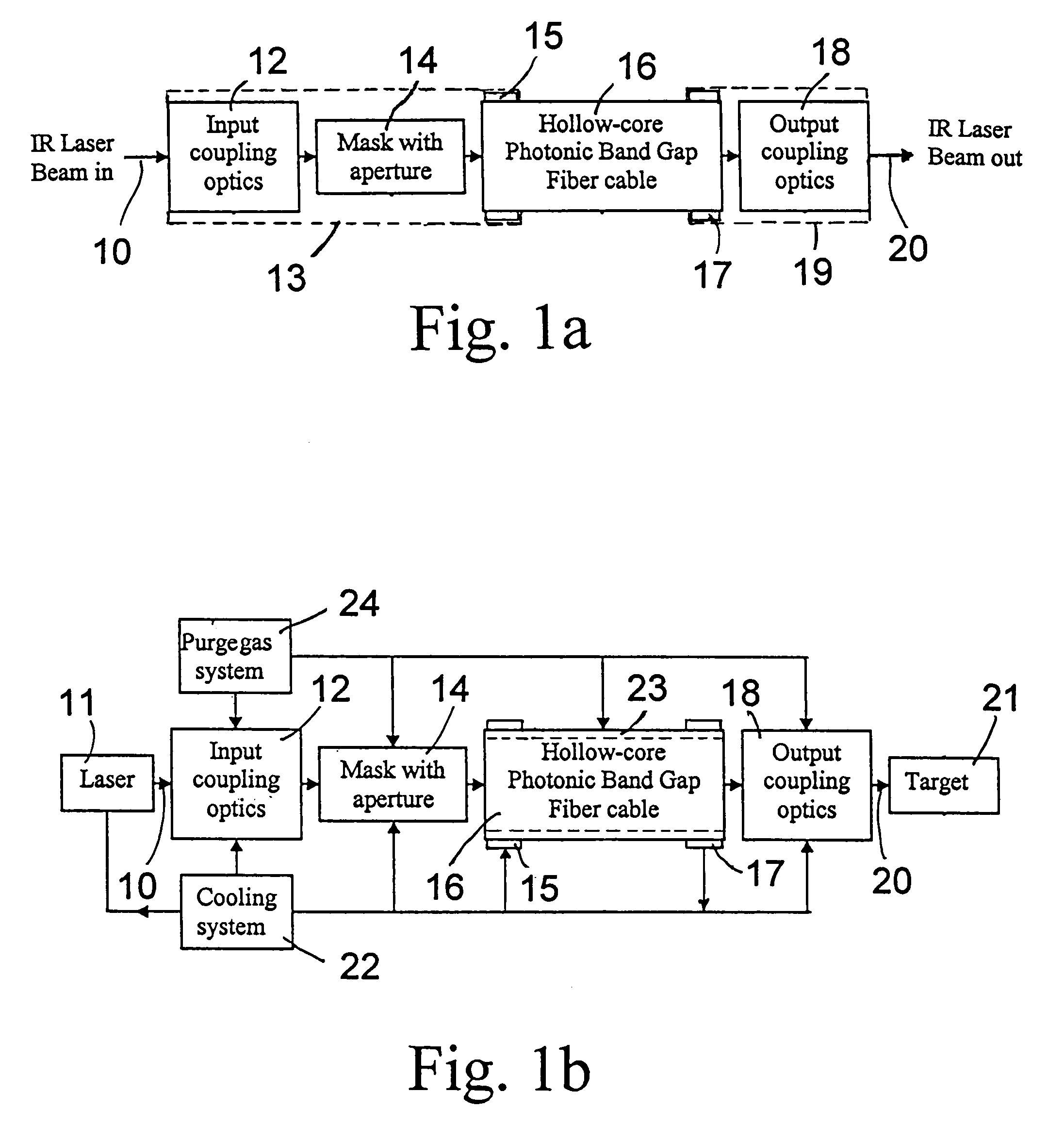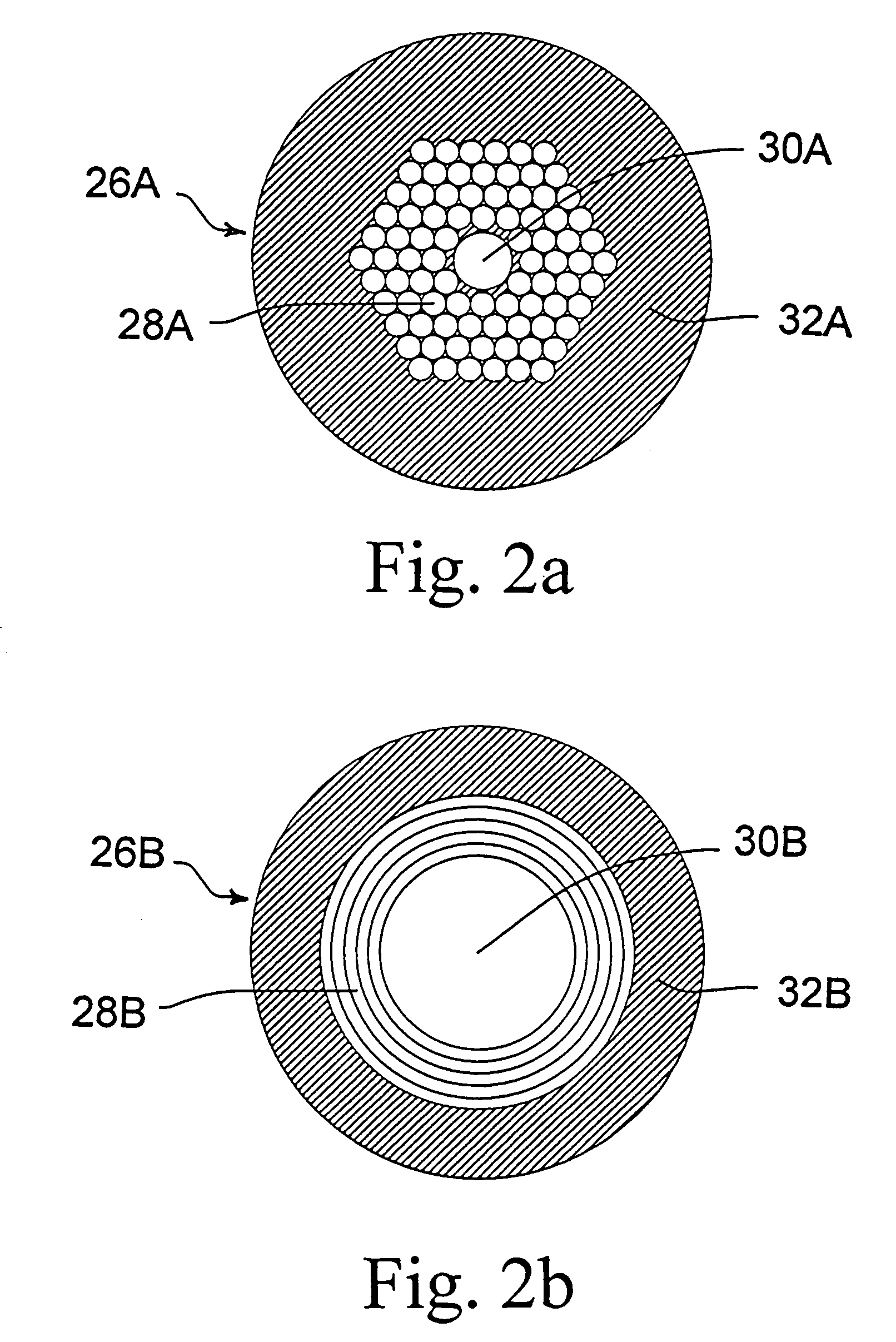Fiber optic infrared laser beam delivery system
a fiber optic infrared and laser beam technology, applied in the direction of yarn, lasers, instruments, etc., can solve the problems of large core silica fiber that cannot be used in high beam quality processes, fused silica fiber is limited to transmission, and cannot be used in laser beam delivery outside, so as to reduce the level of heat, high thermal conductivity, and high reflectivity
- Summary
- Abstract
- Description
- Claims
- Application Information
AI Technical Summary
Benefits of technology
Problems solved by technology
Method used
Image
Examples
Embodiment Construction
[0036]In the drawings in which the same elements are designated by the same reference numbers, FIG. 1a is a block diagram illustrating the basic fiber optic laser beam delivery system of the present invention. As illustrated in this figure, an infrared (IR) laser beam is projected, as shown by arrow 10, into input coupling optics 12 by which the beam is focused so as to pass through the aperture of the mask 14 and be coupled into the hollow-core photonic band gap (HC-PBG) fiber cable 16. The HC-PBG fiber cable 16 may have a length typically ranging from one meter to several hundred meters. The IR laser beam is transmitted through and exits the HC-PBG fiber cable 16 into output coupling optics 18 from which it emerges as shown by arrow 20. The output coupling optics are adapted to collimate the output IR laser beam and eventually to focus it onto a desired target spot. In order to maintain satisfactory alignment between the various components, it is preferable that the input coupling...
PUM
 Login to View More
Login to View More Abstract
Description
Claims
Application Information
 Login to View More
Login to View More - R&D
- Intellectual Property
- Life Sciences
- Materials
- Tech Scout
- Unparalleled Data Quality
- Higher Quality Content
- 60% Fewer Hallucinations
Browse by: Latest US Patents, China's latest patents, Technical Efficacy Thesaurus, Application Domain, Technology Topic, Popular Technical Reports.
© 2025 PatSnap. All rights reserved.Legal|Privacy policy|Modern Slavery Act Transparency Statement|Sitemap|About US| Contact US: help@patsnap.com



